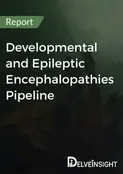
Developmental and epileptic encephalopathies (DEEs) constitute among the most formidable pediatric neurological challenges, characterized by intractable seizures, severe developmental regression, and multifaceted cognitive dysfunction. The therapeutic development journey for these conditions encompasses a comprehensive pipeline from molecular discovery through clinical application, reflecting both the intricate biology of neurodevelopment and the critical need for breakthrough interventions.
Genesis of Discovery: Molecular Foundations
The therapeutic development process originates with fundamental research aimed at unraveling the genetic and molecular mechanisms underlying aberrant brain development. Revolutionary advances in genomic sequencing technologies, including comprehensive exome and genome analysis, have catalyzed the identification of monogenic and polygenic contributors to rare epileptic syndromes. These genetic insights enable the identification of promising therapeutic targets—specific proteins, cellular channels, neurotransmitter systems, or signaling networks whose malfunction precipitates seizure activity and developmental impairment.
Contemporary research emphasizes elucidating how genetic variants compromise neural network integrity, disrupt neuronal excitability balance, and interfere with synaptic communication processes, forming the scientific foundation for therapeutic target selection and validation.
Experimental Validation and Model Systems
Laboratory-based validation employs sophisticated cellular and animal model systems to confirm therapeutic potential. Advanced in vitro platforms, including patient-derived neuronal cultures, three-dimensional brain organoids, and engineered neural networks, facilitate screening of compounds capable of normalizing disease-associated phenotypes. Complementary animal studies, particularly genetically modified rodent models that recapitulate human mutations, provide comprehensive assessment platforms for evaluating therapeutic effects on seizure propensity, developmental progression, and neurophysiological function.
Therapeutic Modality Development
Following target validation, research efforts concentrate on developing specific therapeutic interventions across multiple modalities. Small molecule candidates undergo extensive optimization for neuronal excitability modulation, blood-brain barrier penetration, and safety profiles. Biological therapeutics, including monoclonal antibodies and gene-directed interventions, are developed to directly engage target proteins or correct underlying genetic abnormalities. Gene-based strategies, encompassing viral vector delivery systems, antisense oligonucleotides, and RNA-targeting approaches, offer particular promise for addressing fundamental disease mechanisms rather than symptomatic management.
Preclinical Safety Assessment
Comprehensive preclinical evaluation encompasses detailed pharmacological and toxicological investigations to determine brain penetration efficiency, metabolic processing pathways, and developmental safety profiles. These studies establish optimal dosing parameters while identifying potential safety concerns, ensuring therapeutic appropriateness for vulnerable pediatric populations whose developing nervous systems may exhibit heightened pharmacological sensitivity.
Early Clinical Development
Promising therapeutic candidates advance to carefully designed first-in-human studies, typically beginning with adult participants before progressing to selected pediatric populations. These initial Developmental and Epileptic Encephalopathies Clinical Trials focus on safety assessment, tolerability evaluation, and preliminary target engagement confirmation through specialized biomarker monitoring.
Adaptive Trial Methodologies
Given the rarity and heterogeneity of developmental and epileptic encephalopathies, innovative study designs become essential. Researchers frequently implement adaptive protocols, including open-label studies, crossover designs, and enriched enrollment strategies, integrated with patient registries and validated biomarkers to enhance detection of therapeutic benefits in limited patient populations.
Pivotal Efficacy Evaluation
Following encouraging early-phase results, therapeutic candidates progress to larger international efficacy studies evaluating seizure reduction, developmental milestone achievement, and quality of life improvements. Clinical endpoints encompass both epilepsy-specific assessments and comprehensive neurodevelopmental evaluations, recognizing the complex interplay between seizure control and cognitive development.
Precision Medicine Integration
The Developmental and Epileptic Encephalopathies Pipeline increasingly incorporates personalized approaches for genetically defined subtypes. Patient-specific interventions, such as customized antisense oligonucleotides or individualized gene therapies, represent paradigm shifts toward ultra-personalized medicine through "n-of-1" study designs tailored to individual genetic profiles.
Real-World Evidence Integration
Long-term monitoring through patient registries, digital health platforms, and remote monitoring technologies enables comprehensive assessment of therapeutic outcomes, safety profiles, and developmental trajectories, providing critical real-world evidence that informs future research priorities and treatment optimization.
Collaborative Innovation Ecosystem
Multi-stakeholder partnerships between academic institutions, biopharmaceutical companies, patient advocacy organizations, and regulatory agencies drive continued innovation. These collaborations accelerate translational research, support investigator-initiated studies, and ensure patient-centered development approaches while integrating diverse funding mechanisms from federal grants to venture capital investments.
Future Technological Horizons
Emerging technologies, including advanced gene editing platforms, novel biomarker systems, and sophisticated disease modeling approaches, continue reshaping the therapeutic landscape. The involvement of specialized Developmental and Epileptic Encephalopathies Companies brings together pharmaceutical expertise, biotechnology innovation, and disease-specific knowledge to address these complex neurological conditions through targeted development programs.
Conclusion
The developmental and epileptic encephalopathies therapeutic pipeline represents a sophisticated, multidisciplinary endeavor integrating genetic discovery, advanced modeling, diverse therapeutic approaches, innovative clinical methodologies, and patient-centered collaboration. This comprehensive development process embodies hope for reducing seizure burden, preserving neurodevelopmental potential, and improving outcomes for patients and families confronting these challenging neurological conditions.
Latest Reports Offered by Delveinsight:
Acute Pyelonephritis Market | Asperger Syndrome Market | Attention Deficit Hyperactivity Disorder Adhd Market | Cardiopulmonary Management Device Market | Childhood Atropine For Myopia Progression Market | Cholangiocarcinoma Market | Dyspepsia Market | Emphysema Market | Genital Herpes Market | Growth Hormone Deficiency Market | Guillain-barré Syndrome Market | Hairy Cell Leukemia Market | Intestinal Obstruction Market | Malignant Fibrous Histiocytoma Market | Menopause Market | Metabolic Acidosis Market | Multiple Myeloma Market | Neurostimulation Devices Market
Latest Reports:
https://www.delveinsight.com/report-store/eosinophilic-esophagitis-epidemiology-forecast-insight
https://www.delveinsight.com/report-store/left-ventricular-dysfunction-epidemiology-forecast
https://www.delveinsight.com/report-store/testicular-cancer-epidemiology-forecast
https://www.delveinsight.com/report-store/malignant-mesothelioma-epidemiology-forecast
https://www.delveinsight.com/report-store/basal-cell-nevus-syndrome-epidemiology-forecast
https://www.delveinsight.com/report-store/cholangiocarcinoma-cca-epidemiology-forecast
https://www.delveinsight.com/report-store/pyelonephritis-epidemiology-forecast
About DelveInsight
DelveInsight is a trusted provider of life sciences and pharmaceutical market research and consulting, offering actionable insights that empower organizations to make informed decisions. With a commitment to delivering strategic intelligence, DelveInsight serves as a key partner to global pharmaceutical, biotechnology, and healthcare companies looking to excel in an evolving market landscape.
Contact Us
Kanishk
Email: kkumar@delveinsight.com